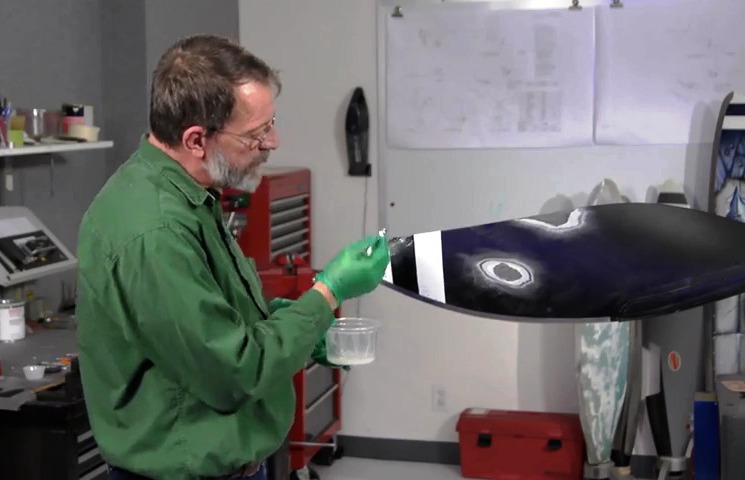
We recently spoke with Kevin Ryan, Technical Representative here at Hartzell, about preventative aircraft propeller maintenance. You can read Part I in this series, about proper propeller inspection, cleaning, and painting, here. In the second part of this series, we talk about how to prevent corrosion and how to address nicks and scrapes to the propeller blades.
Preventing Corrosion
At Hartzell, we recommend that all propeller blades – whether metal or composite – are painted. But why?
“There’s a couple of things,” Ryan says. “First of all, paint is a corrosion protectant. The other thing is, the paint acts as a sacrificial layer. If you’re flying around in fine sand, dirt, or dust on the runway, those minor impacts can either remove paint or they can remove aluminum. You can replace the paint. You can’t replace the aluminum.”
This is true even of composite blades, which can also lose material through erosion. “The other thing that you have to be aware of with composite blades,” Ryan says, “is that composites don’t like ultra-violet light. They will begin to break down with prolonged exposure to ultra-violet light. So in some ways it may be even more important to keep paint on a composite blade than to keep it on an aluminum blade.”
Addressing Nicks and Dings
Among the most popular questions that Ryan gets from both aircraft owners and aviation maintenance professionals is: “How big of a nick can I file out of a metal propeller blade?”
The answer? Ryan cannot definitively make that judgment over the phone, because there is no one-size-fits-all answer. “We don’t have a maximum nick that you can file out published anywhere,” Ryan says. “A lot of people are surprised at that. But the blade they are asking about could have left the factory two days ago, or left the factory forty years ago and been overhauled or filed down in service several times. The amount of material you can remove from that brand-new blade versus that forty-year-old blade are going to be significantly different. There’s nothing that I can point to that says: Oh yeah, the max takeout is 1/8th of an inch. We don’t have any numbers like that for metal blades.”
This is different for composite blades, as composite blades can have material added back in when they are nicked or gouged, restoring them to factory specifications. “We can give you those numbers for composite blades,” he says, “you can have a gouge that’s this deep, but not for aluminum blades because we just don’t know what the status of your blade is.”
Do you have a question for the Hartzell Propeller technical team? Contact us.